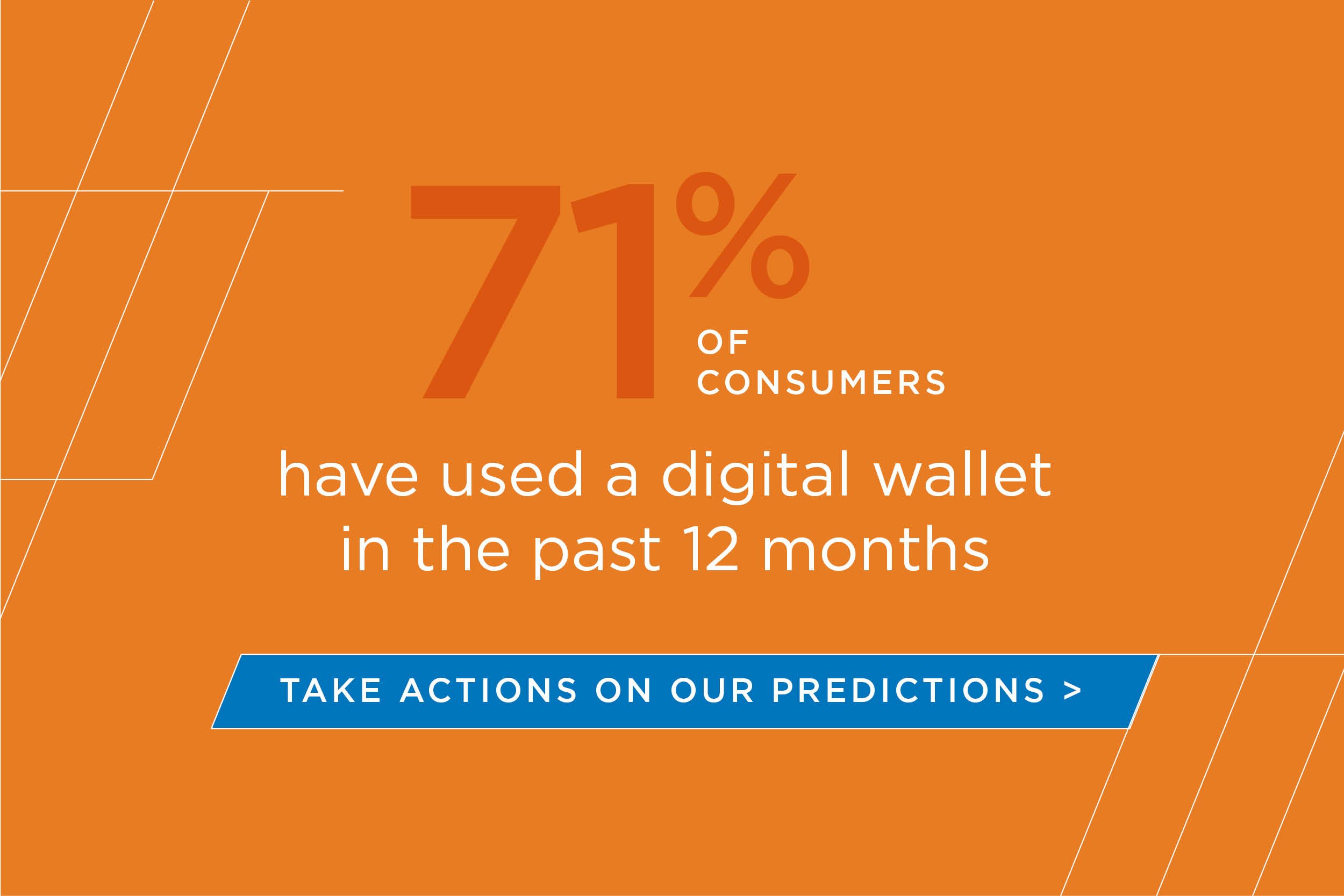The new year is here … but so is economic uncertainty.
What does the coming year have in store for banks and credit unions? How will the change in consumer behavior affect them? How should they respond to changes in consumer behavior and acquire new customers?
Financial institutions will have to be innovative and agile to respond to changes. Vericast’s marketing predictions for 2023 have identified four marketing trends affecting the banking sector.
Here is what we predict:
1. People will get increasingly creative with payment methods
People no longer have only two payment options when they step out – cash or card. Today, ‘buy now pay later (BNPL)’ digital wallets and person-to-person are becoming popular alternative payment methods. With people under financial pressure owing to high inflation and a looming recession, these methods, especially the BNPL, will be seen as a welcome trend.
The use of digital wallets and contactless cards will continue to grow, with 71% of US consumers stating, as of March 2022, they have used a digital wallet in the past year.
BNPL is hotter than ever. One in four Americans have already used the BNPL option and 36% already have a preferred BNPL provider.
What do these changes mean for banks and credit unions?
To put it simply, banks must be agile and innovative to accommodate the changes. Fintech companies are driving innovation in payment gateways. So, banks and credit unions will have to pull up their socks.
2. The return to the office will affect spending habits
As people return to the office and get used to 40 hours of onsite work, consumer behavior will change to reflect these changes. People will commute to work again. A new class of super commuters will emerge. These people are ready to commute a greater distance for fewer days at the office.
People are adopting the balanced hybrid approach to work and are altering their behavior to adapt to the back-to-office culture.
How will hybrid work affect financial institutions?
Banks and credit unions will see a dual impact. First, the financial sector, which has been predominantly full-time work from the office, is seeing a change with employees demanding hybrid work culture for specific job roles. Financial institutions will have to adopt this approach to stay competitive and attract talent.
On the consumer front, hybrid work culture will significantly change the spending pattern. People returning to the office will have less free time on hand and will shop online. Banks can benefit from this by providing easy payment options at checkout. These options include facilitating payment through digital wallets and easy credit card payment and checkout options.
3. People will look for inspiration and education
People are likely cash-starved. The cost of heating homes, putting food on the table and buying staples for day-to-day life is increasing. People are surviving paycheck to paycheck. In these challenging times, they constantly look to their banks and credit unions for financial education.
In addition, the pandemic’s uncertainty highlighted the need for savings accounts. In general, people see the value of building savings. Even those living paycheck to paycheck aspire to save for safeguarding their future.
What are the implications for banks and credit unions?
Banks and credit unions must run educational campaigns to stay top of the mind and grab a share of the shrinking consumer wallet. In addition, they will have to market their products in a way that highlights the monetary benefit of the product, be it a credit product, a loan, or a new bank account.
Coupons, deals and discounts are the rage now as they are perceived as money savers. Banks and credit unions can benefit from this trend by offering incentives for a new account, getting a new credit card, getting a home loan, etc.
In these tough times, banks are waiving overdraft fees and non-sufficient fund fees to attract and retain customers. Some banks and credit unions have eliminated or reduced overdraft fees facilitating customers to utilize the facility without paying the convenience fees. The idea here is to educate the customers and offer benefits that can help customers survive in these tough economic conditions.
4. Brands will (rightly) increase their focus on consumer personalization
The best communication is always targeted, relevant and personalized. As the fight for consumer wallets gets fierce, brands must focus on segmentation and personalized to get the maximum out of their advertising dollars.
Several emerging tech solution providers will be pivotal in turning consumer data into action. People expect personalization in marketing and brands must deliver it to grab people’s attention.
What does this mean for banks and credit unions?
According to Vericast + Financial Brand Survey, email is the most effective channel for awareness and acquisition for financial institutions 1. This is an excellent opportunity for banks and credit unions to deliver personalized, targeted messages to customers or members on their screens. The added advantage here is that people are likely to look for these messages from FIs; thus, banks are essentially reaching an already captive audience.
1Vericast + Financial Brand Survey, October 2022, n=220
